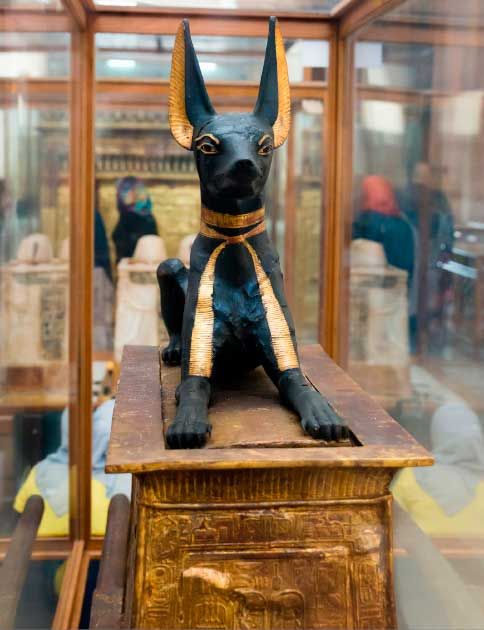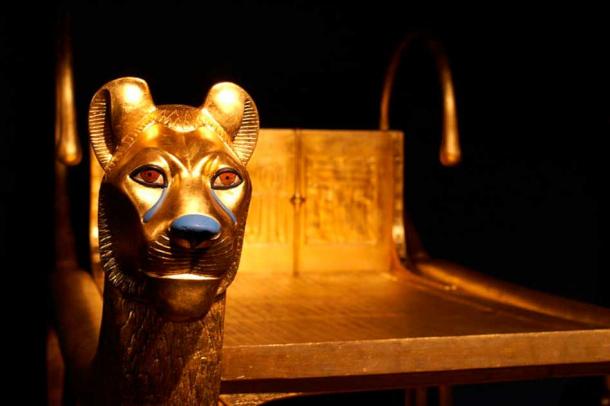**The discovery of Tutankhamun’s tomb in 1922 by Howard Carter was one of the most significant archaeological finds of the 20th century. While the golden funerary mask of the young pharaoh has become iconic, the tomb contained a wealth of other treasures that are equally mesmerizing. Here are 25 unbelievable treasures from the tomb of Tutankhamun that you may not have seen:**

**Golden Throne:** Adorned with intricate scenes of the king and his queen, this throne is a masterpiece of ancient craftsmanship, featuring detailed inlays of colored glass and precious stones.
**Alabaster Canopic Jars:** These jars held the organs of Tutankhamun and were placed in a stunning alabaster chest, each jar carved with the likeness of one of the four sons of Horus.
**Ceremonial Dagger:** A dagger with an iron blade, likely made from a meteorite, and a gold hilt, showcasing the advanced metalworking skills of the time.

**Golden Chariot:** One of six chariots found in the tomb, this one was likely used for ceremonial purposes and is richly decorated with gold leaf.
**Lotus Chalice:** A beautiful drinking vessel shaped like a lotus, symbolizing rebirth, made from alabaster and inscribed with a wish for eternal life.
**Anubis Shrine:** A stunning representation of the jackal-headed god Anubis, protector of the dead, made from wood and covered in black resin.

**Scarab Bracelet:** A gold bracelet adorned with a large scarab, symbolizing the sun god Ra and the concept of rebirth.
**Ceremonial Bed:** A bed with a lion-headed design, used in the rituals of the afterlife, intricately carved and gilded.
**Tutankhamun’s Sandals:** A pair of elaborately gold sandals inlaid with images of the king’s enemies, intended to be trampled underfoot.
**Gold Finger and Toe Stalls:** Protective coverings for the pharaoh’s fingers and toes, made from gold and used in the mummification process.

**Funerary Fans:** Fans made from ostrich feathers and gold, symbolizing the breath of life and the cool breeze of the afterlife.
**Golden Inlaid Chair:** A small chair inlaid with scenes of Tutankhamun and his wife, Ankhesenamun, highlighting their intimate relationship.
**Ushabti Figures:** Hundreds of small figurines intended to serve the king in the afterlife, each holding miniature farming tools.
**Golden Bow and Arrow:** A set of ceremonial weapons, symbolizing Tutankhamun’s prowess as a hunter and warrior.
**Jewelry Boxes:** Intricately decorated boxes containing necklaces, earrings, and other precious items belonging to the king.
**Ceremonial Shields:** Shields decorated with scenes of the king’s victories and providing protection in battle.

**Alabaster Lamps:** Delicately carved lamps that would have been lit during religious rituals, symbolizing the eternal light of the sun.
**Ebony and Ivory Headrests:** Elegant headrests used by the king during his lifetime and placed in his tomb for his comfort in the afterlife.
**Golden Flail and Crook:** Symbols of kingship and authority, these items were placed in the tomb to signify the pharaoh’s eternal rule.
**Lapis Lazuli Scarabs:** Scarab amulets made from lapis lazuli, believed to protect the king’s heart and soul.
**Gilded Coffin:** The innermost of three coffins, made from solid gold and intricately decorated, housing the mummified remains of the boy king.
These treasures, among many others, reveal the opulence and profound cultural significance of Tutankhamun’s burial. They offer a glimpse into the religious beliefs, artistic achievements, and daily life of ancient Egypt, preserving the legacy of a young pharaoh whose tomb continues to captivate the world.


